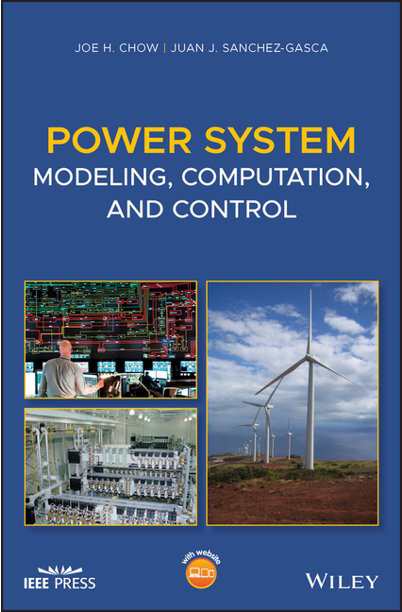New Textbook Empowers Engineers for Power Engineering Careers
Outcome/Accomplishment
Preparing people for careers in power engineering is vital to sustaining and advancing the generation, transmission, distribution, and use of electric power. A new textbook on power system dynamics and controls, now supporting two semesters of graduate coursework on essential power engineering topics, was developed by research educators working with the Center for Ultra-Wide-Area Resilient Electric Energy Transmission Networks (CURENT), a National Science Foundation (NSF) Engineering Research Center (ERC) supported by NSF and the U.S. Department of Energy and headquartered at the University of Tennessee-Knoxville (UTK).
Impact/Benefits
Among the most critical engineering accomplishments advancing human well-being in the 20th century was the construction of power grids and their associated infrastructures all over the world. Electrification drives industrialization and human productivity in developed countries and significantly improves the quality of life in less developed countries. The two courses supported by this book address the dynamic aspects of components and how they interact with each other in the enormously complex, continuously operating electric power systems using the prevailing central station model of power generation. This background will prepare power engineers to deal with anticipated future power systems, as well, in which most households will be equipped with solar panels, and every town will have a few wind turbines.
Explanation/Background
CURENT is a collaboration between academia, industry, and national laboratories.Professor Joe Chow, a Rensselaer Polytechnic Institute Professor and CURENT Campus Director there, authored the new textbook in collaboration with Dr. Juan J. Sanchez-Gasca, a Technical Director at GE Energy Consulting. In summarizing the material in the book, they explain that it is based on two graduate-level courses taught at RPI (Computer Methods for Electric Power Engineering and Advanced Power System Modeling and Control) since 2009. The first ten chapters (power flow solution, voltage stability, simulation methods, transient stability, small-signal stability, synchronous machine models [steady-state and dynamic models], excitation systems, and power system stabilizer design) are taught in the former course, and the other seven chapters are taught in latter. The courses and book provide power students with an understanding of the practices in power system stability analysis and control design and the computational tools being used and provided by commercial vendors.
Location
Knoxville, Tennesseewebsite
Start Year
Energy and Sustainability
Energy, Sustainability, and Infrastructure
Lead Institution
Core Partners
Fact Sheet
Outcome/Accomplishment
Preparing people for careers in power engineering is vital to sustaining and advancing the generation, transmission, distribution, and use of electric power. A new textbook on power system dynamics and controls, now supporting two semesters of graduate coursework on essential power engineering topics, was developed by research educators working with the Center for Ultra-Wide-Area Resilient Electric Energy Transmission Networks (CURENT), a National Science Foundation (NSF) Engineering Research Center (ERC) supported by NSF and the U.S. Department of Energy and headquartered at the University of Tennessee-Knoxville (UTK).
Location
Knoxville, Tennesseewebsite
Start Year
Energy and Sustainability
Energy, Sustainability, and Infrastructure
Lead Institution
Core Partners
Fact Sheet
Impact/benefits
Among the most critical engineering accomplishments advancing human well-being in the 20th century was the construction of power grids and their associated infrastructures all over the world. Electrification drives industrialization and human productivity in developed countries and significantly improves the quality of life in less developed countries. The two courses supported by this book address the dynamic aspects of components and how they interact with each other in the enormously complex, continuously operating electric power systems using the prevailing central station model of power generation. This background will prepare power engineers to deal with anticipated future power systems, as well, in which most households will be equipped with solar panels, and every town will have a few wind turbines.
Explanation/Background
CURENT is a collaboration between academia, industry, and national laboratories.Professor Joe Chow, a Rensselaer Polytechnic Institute Professor and CURENT Campus Director there, authored the new textbook in collaboration with Dr. Juan J. Sanchez-Gasca, a Technical Director at GE Energy Consulting. In summarizing the material in the book, they explain that it is based on two graduate-level courses taught at RPI (Computer Methods for Electric Power Engineering and Advanced Power System Modeling and Control) since 2009. The first ten chapters (power flow solution, voltage stability, simulation methods, transient stability, small-signal stability, synchronous machine models [steady-state and dynamic models], excitation systems, and power system stabilizer design) are taught in the former course, and the other seven chapters are taught in latter. The courses and book provide power students with an understanding of the practices in power system stability analysis and control design and the computational tools being used and provided by commercial vendors.

